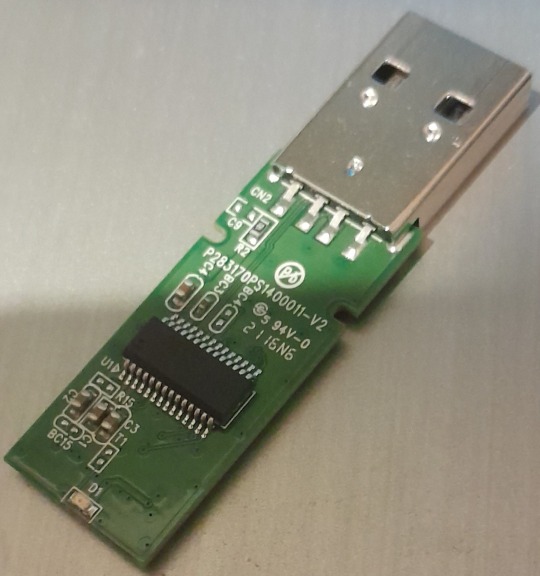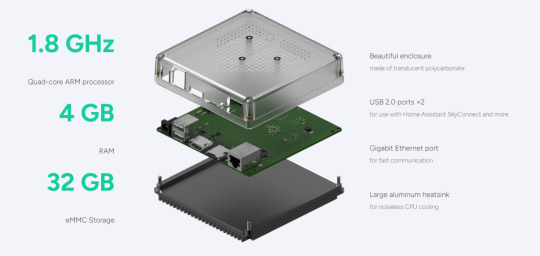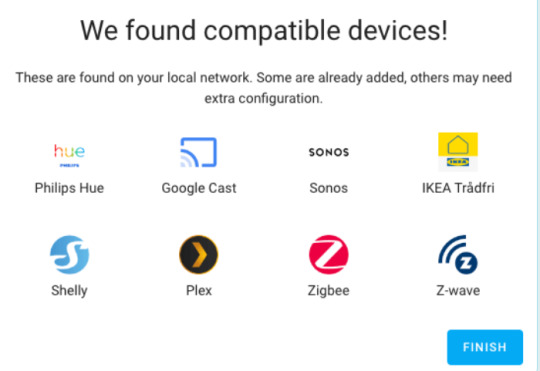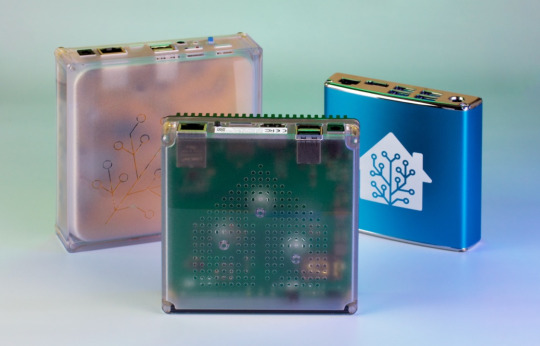#eMMC storage drives
Explore tagged Tumblr posts
Text
https://www.futureelectronics.com/p/semiconductors--memory--storage--embedded-storage/emmc04g-w627-x03u-kingston-1111540
What is eMMC storage, eMMC memory, solid-state hard drives
EMMC04G-MT32-01G10
#Memory ICs#Storage#eMMC#EMMC04G-MT32-01G10#Kingston#embedded Multimedia Card#Data transfer speeds#NAND flash controller#gate#eMMC storage#eMMC memory#solid-state hard drives#embedded memory device#eMMC storage drives
1 note
·
View note
Text
https://www.futureelectronics.com/p/semiconductors--memory--storage--embedded-storage/emmc04g-mt32-01g02-kingston-3178976
What Is Nand Flash Memory, Non volatile memory, Flash memory manufacturers
4GB I-temp eMMC 5.1 (HS400) 153FBGA 4GB5.1 11.5x13x0.8
#Memory ICs#Flash Memory#Nand Flash Memory#EMMC04G-WT32-01G02#Kingston#flash storage upgrade#NAND memory#eMMC memory#Non volatile memory#manufacturers#ram memory#Types of Non Volatile SRAMs#USB flash drives
1 note
·
View note
Text
https://www.futureelectronics.com/p/semiconductors--memory--storage--embedded-storage/emmc04g-wt32-01g10-kingston-6179835
eMMC components, NAND Flash Memory, eMMC modules, storage capacity
EMMC 5.1 INTERFACE,153-BALL FBGA,3.3V,-25C-+85C
#Kingston#EMMC04G-CT32-01G10#Memory ICs#Flash Memory#Nand Flash Memory#Data transfer speeds#DRAM Memory#drives#NAND flash controller#emmc storage capacity#embedded Multimedia Card#eMMC components#NAND Flash Memory#modules#storage capacity
1 note
·
View note
Text
USB flash memory storage, emmc storage upgrade, Emmc memory chip
4 GB 11.5 x 13 x 1.0 Surface Mount v5.0 e•MMC™ Flash Memory - FBGA-153
#Memory ICs#Storage#eMMC#EMMC04G-W627-X02U#Kingston#USB flash memory storage#emmc storage upgrade#Emmc memory chip#emmc hard drive memory controller#Media Card Sockets#emmc drive replacement#memory storage device#PCB Connectors#SD Memory Card Connectors#Memory card
1 note
·
View note
Note

tell me everything you can infer from this image of a busted usb I own.
So the chip appears to have no text on it. That means this is a generic IC/PCB, which doesn't mean the thing is cheap, often the brand name ones use the same.
So that chip up top is the controller. It speaks USB to the computer and it talks to the flash chip(s), which are going to be on the other side. Often the boards are designed to have spots for multiple chips, so they can reuse the same board: the difference between a 32gb drive and a 64gb drive is just how many chips they solder onto it.
So if this thing is dead, it's probably the flash chip. The controllers seem pretty reliable, but they're useless without the flash, and flash chips slowly die as they have a limited number of writes.
And since USB flash drives are effectively disposable, they end up with the cheapest crappiest flash. The good shit goes into enterprise SSDs, then consumer SSDs, then big device on-board-storage (eMMC), then finally SD cards and then USB drives.
So yeah. Can't really tell you anything about it other than that. The numbers you seer are going to be used internally by the PCB assembler, they don't mean anything to anyone else.
147 notes
·
View notes
Text

My Steam Deck has brought me a lot of pleasure over the past year being able to easily play games in short bursts and to easily take my gaming library with me when I leave the house.
However because I decided to get the base model it only came with a slow 64GB eMMC SSD for internal storage. Sure I've got a 256GB SDCard, but it's transfer speeds are only a fraction of what's possible with an internal SSD.
As you can see in the image above the default internal storage only has one game installed, the rest is Steam Deck OS files. Not ideal.
After watching a few YouTube videos of people who'd successfully upgrade their Steam Deck's internal storage, I decide it would be worth trying it myself.
I decided to go with a Western Digital PC SN740 1TB M.2 2230 PCIe 4.0 NVMe SSD/Solid State Drive which cost me £80

I used iFixIt's great step by step guide to safely crack open my deck.



Valve have made a very serviceable machine in the Steam Deck and getting the old SSD removed and replaced was pretty straight forward.

After swapping out the drives I needed to follow the official SteamOS recovery guide to get things reinstalled. Which again was pretty straightforward and quick.
So, did it work?

Oh wonderful! Look at all that fresh open space, ready to be filled with lots of games!
I've now got more storage than the high-end Steam Deck at a lower cost. Gotta love that
3 notes
·
View notes
Text
The Samsung AM9C1 Automotive SSD With 8th-Gen V-NAND

Using 8th-generation V-NAND,Samsung Electronics Creates the First Automotive SSD in the Industry
Automotive SSD
With a 5nm controller, SLC mode option, and cutting-edge V-NAND technology, the 256GB AM9C1 has the quickest speed in the industry. For next-generation cars with on-device AI capabilities, the SSD is the best option because to its improved performance and dependability.
- Advertisement -
The first PCIe 4.0 vehicle SSD based on eighth-generation vertical NAND (V-NAND) was successfully produced by Samsung Electronics, a global leader in advanced memory technology, the company stated today. The AM9C1 auto SSD is the finest choice for on-device AI capabilities in automotive applications because it provides better endurance and industry-leading performance.
The new 256GB auto SSD will provide sequential read and write rates of up to 4,400 megabytes-per-second (MB/s) and 400MB/s, respectively, with around 50% better power efficiency than its predecessor, AM991.
“By offering high-performance, high-capacity automotive products, Samsung collaborating with global autonomous vehicle makers,” stated Hyunduk Cho, Vice President and Head of Automotive Group at Samsung Electronics’ Memory Business. Samsung will maintain its position as the industry leader in Physical AI memory, which includes robotics and autonomous driving technology.
With its single-level cell (SLC) Namespace feature and built on Samsung’s 5-nanometer (nm) controller, the AM9C1 exhibits excellent performance, making files containing large amounts of data easy to access. Users can take advantage of the increased read and write speeds of up to 4,700MB/s and 1,400MB/s, respectively, by transitioning from the original triple-level cell (TLC) state to SLC mode. Additionally, SLC SSDs offer increased dependability.
With important partners, the 256GB AM9C1 is already undergoing sampling, and by year’s end, mass production is anticipated to start. As the market for high-capacity automotive SSDs continues to grow, Samsung intends to release several storage lineups of the AM9C1, with capacities ranging from 128GB to 2 terabytes (TB). Early in the following year, the largest 2TB model in the industry is expected to go into mass production.
Samsung’s new automotive SSD product meets the automotive semiconductor quality standard AEC-Q100 Grade 2 with more rigorous board-level testing, guaranteeing consistent performance throughout a broad temperature range of -40°C to 105°C.
Samsung also uses a number of quality assurance procedures to make sure that its products meet the strict durability and stability requirements of the automobile industry. With its UFS 3.1 software, the business obtained ASPICE Automotive Software Process Improvement and Capability dEtermination CL3 authentication in March of this year.
Samsung will work to maintain and improve its automotive products’ technological stability to achieve ISO/SAE 21434-based CSMS certification.
The ISO/SAE 21434 and ASPICE certifications, according to Hwaseok Oh, Executive Vice President of Samsung Electronics’ Memory Business, “are milestones that affirm the reliability and stability of Samsung technology.” “Samsung will keep improving the quality and stability of its products, giving important partners the best option.”
Samsung Electronics
Samsung’s groundbreaking technologies inspire people worldwide and shape the future. Through its SmartThings ecosystem and open collaboration with partners, the company is changing TVs, smartphones, wearables, tablets, home appliances, network systems, memory, system LSI, foundry, and LED solutions. It is also creating a seamless connected experience.
Automotive grade SSD
Surpassing transportation, and into a space of fun
Complete range of performance memory. Samsung’s expanded line-up of NAND products offers diverse solutions optimized for automotive use. Exceptional eMMC, UFS, and AutoSSD empower the next generation of hugely upgraded in-vehicle infotainment systems, for outstanding mobility experiences.
AutoSSD
BGA-type AutoSSD’s are ideal for creating PKG structures specialized for the automotive industry. Up to 1TB of storage and max 2,300 MB/s read speed equip vehicles with ultrafast in-vehicle data management.
Automotive solutions
Product collections for automotive that fits your needs. Automotive solutions comprise an extensive array of goods, services, and technologies intended to improve the functionality, economy, security, and comfort of automobiles.
Read more on govindhtech.com
#SamsungAM9C1#ssd#8thGen#VNAND#AutomotiveSSD#AImemory#AIcapabilities#AM9C1#SmartThings#smartphone#AutoSSD#news#Automotivesolutions#AutomotivegradeSSD#technology#technews#govindhtech
0 notes
Text
LENOVO IDEAPAD 1 14IGL7-8AID(SAND)/8BID(GREY) N4020 8GB 512GB WIN 11
Spesifikasi : Processor : Intel® Celeron® N4020 (2C / 2T, 1.1 / 2.8GHz, 4MB) Graphics : Integrated Intel® UHD Graphics 600 Chipset : Intel® SoC Platform Memory : 8GB SO-DIMM DDR4-2400 Storage : 512GB SSD M.2 2242 PCIe® 4.0×4 NVMe® Storage Support : One drive, up to 512GB M.2 2242 SSD or 512GB M.2 2280 SSD Storage Slot : One M.2 2280 PCIe® 2.0 slot (non-eMMC models) Card Reader : SD Card…
0 notes
Text
HP Chromebook 15A Intel Celeron N4500 15.6 Inch (39.6Cm) Hd,Anti-Glare, Chrome OS Micro-Edge Laptop(4Gb Ram/128 Gb Emmc/Intel Uhd Graphics/Google Assistant/Chrome 64/Numeric Keypad) 15A- Na0012Tu
Price: (as of – Details) Processor: Intel Celeron N4500 (up to 2.8 GHz burst frequency(2c),4 MB L3 cache, 2 cores, 2 threads)|Memory: 4 GB LPDDR4x-3200 MHz RAM (onboard)| Storage: 128 GB eMMC + 100GB Google Drive (1 year)Display & Graphics : 39.6 cm (15.6″) diagonal, HD, micro-edge, anti-glare, Screen Resolution- 1366 x 768, Brightness- 250 nits, Color Gamut- 45% NTSC, Screen to body ratio-…
0 notes
Text
Unveiling the Power of Embedded Mini PCs: Compact Marvels Redefining Computing
In today's fast-paced digital landscape, where space is a premium and performance is paramount, embedded mini PCs emerge as the unsung heroes of computing. These compact marvels pack a punch, offering a plethora of functionalities in a small form factor. From powering IoT devices to driving multimedia displays, embedded mini PCs are reshaping industries and revolutionizing how we perceive computing. For more info about industrial mini PC visit here.
Understanding Embedded Mini PCs
Embedded mini PCs, often referred to as single-board computers (SBCs), are complete computing systems integrated onto a single circuit board. Unlike traditional desktops or laptops, which come in large enclosures housing various components, embedded mini PCs condense processing power, memory, storage, and connectivity into a compact design.
The Versatility of Embedded Mini PCs
One of the defining characteristics of embedded mini PCs is their versatility. These tiny machines find applications across a wide range of industries:
IoT and Edge Computing:
Embedded mini PCs are the backbone of IoT (Internet of Things) devices. They have the power to gather, process, and send data from sensors and actuators instantly. Additionally, they excel in edge computing scenarios, where processing tasks are performed closer to the data source, reducing latency and enhancing efficiency.
Digital Signage and Kiosks:
In the realm of digital signage and interactive kiosks, embedded mini PCs are the top choice. Their compact size allows for discreet installation behind displays, while their robust performance ensures smooth content playback and seamless user interactions. From retail stores to transportation hubs, these mini PCs drive engaging digital experiences.
Industrial Automation:
Industries rely on embedded mini PCs for automation and control systems. Whether it's monitoring manufacturing processes, managing inventory, or controlling machinery, these rugged machines deliver reliability and stability in harsh environments. Their small footprint is particularly advantageous in space-constrained industrial settings.
Home Entertainment:
Embedded mini PCs have found their way into living rooms, powering home entertainment systems and media centers. With support for high-definition video playback and gaming, these miniature PCs offer a compelling alternative to traditional set-top boxes and gaming consoles. Their low power consumption and silent operation make them ideal companions for immersive multimedia experiences.
Key Features and Specifications
Embedded mini PCs come in a variety of configurations to suit diverse requirements. Some key features and specifications to consider include:
Processor: From energy-efficient ARM processors to high-performance x86 CPUs, embedded mini PCs offer a range of processing options to meet specific performance needs.
Memory: RAM capacity determines multitasking capabilities and overall system responsiveness. Mini PCs typically offer varying levels of RAM, with options for expansion in some models.
Storage: Whether it's eMMC flash storage for compactness or SATA/PCIe interfaces for high-speed SSDs, embedded mini PCs provide storage solutions tailored to different use cases.
Connectivity: Gigabit Ethernet, Wi-Fi, Bluetooth, and USB ports enable seamless integration with networks and peripherals, ensuring flexibility and connectivity.
Operating System Support: From Linux distributions to Windows and Android, embedded mini PCs support a wide range of operating systems, catering to diverse development and deployment preferences.
Conclusion: Empowering Innovation in a Compact Package
Embedded mini PCs embody the essence of innovation, offering a compelling blend of compactness, performance, and versatility. As technology continues to evolve, these miniature marvels will play an increasingly pivotal role in shaping the future of computing across industries. Whether it's driving IoT ecosystems, enhancing digital experiences, or powering industrial automation, embedded mini PCs stand as testaments to the boundless possibilities of compact computing. Embrace the power of miniaturization and unlock new horizons with embedded mini PCs!
0 notes
Text
HP Newest 14" HD Ultra Light Thin Laptop, Quad-Core Intel Celeron Processor, 8GB RAM, 192GB (64GB eMMC+ 128GB Card), Wi-Fi, Upto 11 Hours, Windows 11 S + 1 Year Office 365+HubxcelAccessory, Pink
Price: (as of – Details) 2024 HP 14″ Laptop: Designed for the always connected life, the nimble HP Stream Laptop lets you easily shift from homework workhorse to streaming your favorite shows. Processor: Intel Celeron N4120 ProcessorGraphics: Intel UHD GraphicsOperating System: Windows 11 Home S Mode 64-bitMemory: Upgraded to 8GB DDR4 SDRAMHard Drive: 192GB Storage (64GB eMMC+128GB Storage…

View On WordPress
0 notes
Text
https://www.futureelectronics.com/p/semiconductors--memory--flash--nand/emmc04g-ct32-01g10-kingston-5177876
What is flash memory, USB flash memory storage, flash memory drive
EMMC 5.1 INTERFACE,153-BALL FBGA,3.3V,-25C-+85C
#Kingston#EMMC04G-CT32-01G10#Memory ICs#Flash Memory#Nand Flash Memory#chip#programmable flash memory#USB flash drives#USB flash memory storage#flash memory drive#Nand flash drive#flash memory#flash memory chip#memory card#flash memories
1 note
·
View note
Text
https://www.futureelectronics.com/p/semiconductors--memory--storage--embedded-storage/emmc04g-m627-e02u-kingston-8130398
eMMC storage drives, emmc storage upgrade, eMMC multimedia cards
4GB eMMC v5.1 3.3V 153-ball BGA Operating Temp - 25C to +85C
#Kingston#EMMC04G-M627-E02U#Memory ICs#Storage#eMMC#NAND flash controller#data transfer speeds#NAND gate#embedded memory device#flash memory#Emmc speed laptop#eMMC chips#upgrade#eMMC multimedia cards
1 note
·
View note
Text
Acer 2023 Newest Aspire 1 Slim Laptop, 15.6'' Full HD Display, 16GB Memory, 1TB SSD Storage, Intel Dual-core Processor, Ethernet Port, Type-C, Windows 11 Home S, Year Microsoft 365 Included, Silver
Price: (as of – Details) Office 365 for one year: Get full access to Microsoft Excel, Word, PowerPoint, OneNote, Access, and 1 TB of One Drive storage for 1 year Processor: Intel Celeron N4500 (Up to 2.8 GHz, 2 Core)Graphics: Intel UHD GraphicsOperating system: Window 11 Home in S modeMemory: 16GB RAMHard Drive: 1TB SSD (128GB eMMC startup disk+1TB PCIe SSD)Display: 15.6″ FHD (1920×1080), LCD…

View On WordPress
0 notes
Text
Tablet Parts: The Building Blocks of Digital Mobility

Tablets have become an integral part of our digital lives, serving as versatile tools for work, play, and everything in between. These sleek and portable devices are a combination of advanced technology and precision engineering. But what goes on behind the sleek screens? It's the tablet parts that form the backbone of these modern marvels. In this blog, we delve into the significance of tablet parts and how they contribute to the functionality of these indispensable gadgets.
1. Display Components: The display is the window to the digital world. Tablet parts like LCD screens, touch sensors, and glass protectors are key elements that determine the quality of the visual experience. High-resolution displays and responsive touchscreens are crucial for a satisfying user experience.
2. Battery and Power Management: Tablet parts like batteries and power management circuits are responsible for providing the energy needed to keep your device running. Advances in battery technology are essential for longer usage times and faster charging.
3. Processors and Chipsets: The brains of the operation, processors and chipsets, dictate the tablet's performance. Faster processors, improved graphics capabilities, and efficient chipsets contribute to smoother multitasking and enhanced gaming experiences.
4. Connectivity Components: Tablet parts related to connectivity, such as Wi-Fi and Bluetooth modules, enable seamless internet access and device pairing. The evolution of these components ensures faster and more reliable connections.
5. Storage Solutions: Storage is a critical element in tablets. Solid-state drives (SSDs) and eMMC (embedded MultiMediaCard) storage solutions offer faster data access and ample storage space for apps, media, and files.
6. Cameras and Sensors: Tablets are versatile devices for capturing photos and videos. High-quality camera modules and sensors enable users to take clear and vibrant images while also enhancing augmented reality experiences.
7. Durable Materials: The choice of materials, like aluminum or plastic, impacts the tablet's build quality and durability. High-quality materials ensure the device can withstand daily wear and tear.
In conclusion, tablet parts are the unsung heroes of digital mobility. They are the invisible force that powers our modern devices, enabling us to work, connect, and be entertained on the go. Whether you're using a tablet for productivity, entertainment, or creative pursuits, the quality and performance of its components significantly impact your overall experience. As technology continues to advance, we can expect even more impressive tablet parts that enhance our digital lives and push the boundaries of what's possible.
0 notes
Text
Introducing Home Assistant Green - A Privacy-focused and Easy-to-use Home Automation Hub
Home Assistant is 10 years old and an affordable smart home hub launched to celebrate the 10th anniversary. The initial 1000 Home Assistant Green hubs were soon sold out, which proves its popularity. Given that everything you need for Home Assistant is included in a single box, it serves as an entry-level smart hub for consumers who are just starting out in home automation. The hub can be activated by only plugging in the included network and power wires.
What is Home Assistant Green?
Home Assistant Green is a brand new smart home hub sold at $99. Here I am gonna to introduce its hardware and software.
Hardware

Source: screenshot from home-assistant.io
From the inside, a powerful 1.8 GHz quad-core CPU developed based on RK3566 SoC, which is from a Chinese fabless semiconductor company, to run applications smoothly and quickly. RK3566 SoC is a high-end SoC featuring Arm Cortex-A55 CPU and 1TOPs@INT8 NPU.
What makes it outstanding is 4 GB LPDDR4X of RAM and 32 GB eMMC flash drive of storage, this enables users to running Home Assistant on the device for a long time, and make it simple to get going without the need for manual setup or flashing a memory card from another PC. For individuals who wish to try Home Assistant without having to deal with the technical difficulties of setting up the storage themselves, this is highly beginner-friendly.
Interfaces of Home Assistant Green includes three status LEDs, a 12 V DC power supply (1 A), an optional battery, two USB 2.0 Type-A Host ports for use with Home Assistant SkyConnect and more, an HDMI output port solely for diagnostic purposes, one MicroSD slot for recovery purposes, and a Gigabit Ethernet port for the purpose of greater network reliability and fast communication.
Software

Source: screenshot from home-assistant.io
Home Assistant app is impressively potent, with more than 1000 built-in integrations catering to a diverse range of smart devices and online services. Additionally, a thriving community consistently contributes updates and expansions. In a simple word, everything in your home can be encompassed in Home Assistant.
You can also choose to make Home Assistant work together with you existing Apple HomeKit, Google Home, Samsung SmartThings, and Amazon Alexa. In other words, you can integrate Home Assistant into your existing smart home setup. The Home Assistant’s great compatibility ensures that the transition to using Home Assistant will not disrupt or require a sudden change in the way your household interacts with your smart devices.
As it’s not a typical Home Assistant Zigbee gateway, for users whose places have Zigbee device to connect, you may need extra configuration. For Zigbee, you can add a tiny blue Home Assistant SkyConnect to connect Zigbee devices. It is the easiest way to add Zigbee support to your Home Assistant instance and make it Matter-ready. A future firmware update will bring Thread support, allowing SkyConnect to power Matter and Zigbee networks at the same time. If you need to connect Z-Wave or Bluetooth devices, you also have the flexibility to utilize third-party USB devices to expand Z-Wave or Bluetooth functionality.
Build Privacy-focused Smart Home Easily

Home assistant proposed a “Open Home” vision centered on three core principles: privacy, choice and durability. Privacy means that the devices can operate locally by default, with an opt-in cloud connectivity, putting the control right in the hands of the users. Choice means that connected devices communicate via local APIs, free from vendor restrictions of limiting your access to your data or limiting the interoperability of your devices. Durability means that devices should be designed to provide long-lasting performance and ongoing support, without worry that the support is stopped or functions are crippled.
Easy-to-use for Beginners

Home Assistant Yellow is a smart home hub with with a wide array of features smart home enthusiasts want, and is a good fit for advanced users. However, for those just embarking on their smart home journey, the full spectrum of Home Assistant Yellow's capabilities might be unnecessary and somewhat challenging to initiate.
Setting up Home Assistant Yellow requires users to procure their own Raspberry Pi or similar hardware, and due to global component shortages, the Home Assistant Yellow required Compute Module 4 has become more expensive and less accessible. Consequently, Home Assistant Yellow may no longer be an ideal choice for beginners.
As we previously mentioned, Home Assistant Green offers a remarkably straightforward setup process. To activate it, you need to follow just three simple steps: power, setup, and go!
Final Word
Home Assistant Green stands out as the easiest and most privacy-focused solution for effortless home automation. With its straightforward setup, this platform empowers you to seamlessly manage all your smart devices through a single system, ensuring that your data remains securely stored locally by default. Benefitting from the vibrant Home Assistant ecosystem, this board undergoes continuous enhancements through open-source contributions every month.
Feel free to harness its capabilities for a wide range of applications, including smart home control, home security, energy management, remote operation, and much more. The possibilities are virtually endless.
0 notes